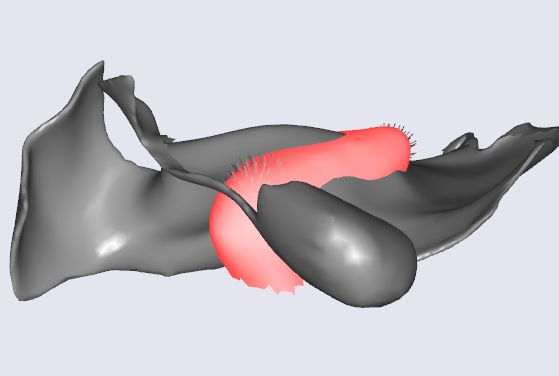Hello AnyBody,
When one surface is in contact with another, I want to know if the relative slip of one surface when in contact with the other can be plotted during simulation? Similar to using this code AnyDrawForceSurface, it will draw force during simulation.
Best regards,
han
Hi Han,
Can you help me understand how would you define the relative slip between the two surfaces? If you have an AnyKinLinear between the two surfaces, you should be able to see the relative movement between the two surface. Otherwise, if you can help me with a mathematical definition, then maybe I can help you with the code.
Best regards,
Dave
Hi Dave,
For example a face and another face touch, I want to know how far the vertices on one of the contact faces slide relative to the vertices on the other face from the beginning of contact to the end of the motion? What I want to see is the movement of all the touching vertices on a face relative to another face.
One more point, I wonder if it's normal to have penetration between two surfaces if you use FDK?
Can you help me solve the above two problems?
Best regards,
Han
Hi Han,
You can use the GetVertices function (this is already a part of the AnyDrawSurf, AnySurfSTL class) to extract some vertices on both the surfaces:
AnyFloat MyVertices = MySurface.GetVertices({0,2,4,5,7,}); // make array with the indices of the vertices
Then you can select the corresponding pairs on the surfaces and create an AnyKinLinear, or simply compute the vector length using the r value of the stl object. To make an AnyKinLinear, you would need to create reference nodes first, and you can create a group of reference nodes using AnyRefNodeGroup. Similarly, AnyKinLinear can measure distances between multiple reference frames. Lastly, you can use an AnyDrawVector to visualize the the slip on the model view.
As you see, it is not something that exists by default in AnyBody, but it is possible to use the existing classes to come up with what you want. I may not have completely understood what exactly, but I hope it will give you a good idea to proceed further.
Regarding the penetration, this is normal and any kind of contact force model will depend on the penetration to ramp up the contact force. You can modify the PressureModule in AnyForceSurfaceContact if you are not satisfied with contact force vs penetration.
Best regards,
Dave
Hi Dave,
I also have a problem: I applied a bite force to the teeth on the natural joint side, but when the bite force was at its maximum, my model would penetrate too much, which I felt was wrong. I've tried changing the PressureModule in AnyForceSurfaceContact, but this doesn't solve the problem of excessive penetration, I want to know how I can fix this?
Other occlusal times Normal penetration:

Maximum occlusion time Too much penetration:

Best regards,
Han
Hi Han,
It could be that there are some issues in the quality of the surface and how it interprets penetration.
Also, it's important that you start the model in a state that has no penetration.
I will suggest you make a very simple model with these two surfaces. They should start in a non-penetrating state, and then have your FDK analysis with a driver that is trying to push the two surfaces together. This will help you identify what could be the cause of the problem.
Best regards,
Dave
This topic was automatically closed 125 days after the last reply. New replies are no longer allowed.